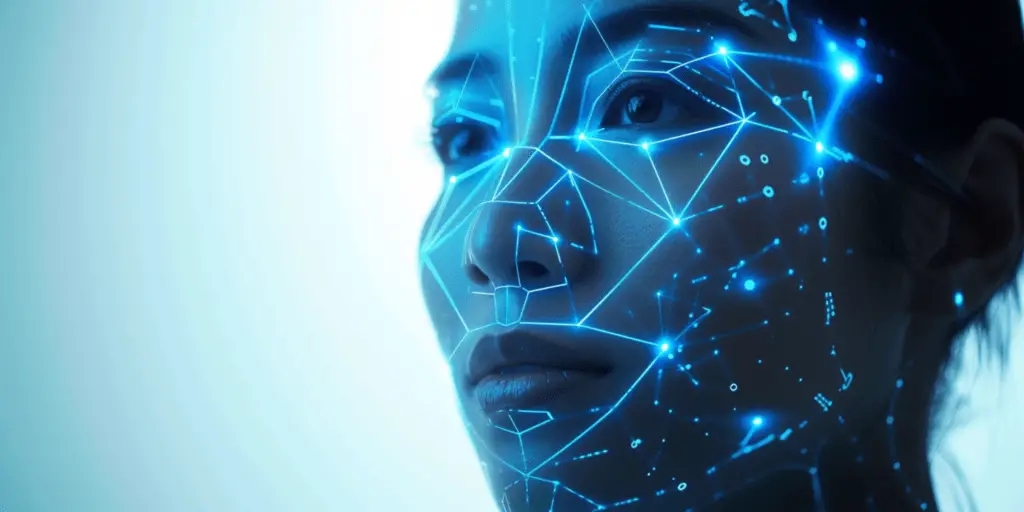Digital landscape is evolving at an unprecedented pace, largely driven by advancements in artificial intelligence and generative technologies. This evolution has ushered in a new era of content creation, characterized by the rise of synthetic media digital content that is either entirely generated or significantly altered by AI technologies.
The capacity of these technologies to create highly realistic images, videos, and audio recordings has opened up a world of possibilities for creators. However, it has also introduced a myriad of challenges, particularly concerning the potential for misinformation, deepfakes, and AI bias.
The increasing sophistication of AI-generated content has raised alarms among regulators, policymakers, and the public. Deepfakes—hyper-realistic digital falsifications—have the potential to undermine trust in digital media, manipulate public opinion, and threaten the integrity of information disseminated online.
In response, governments around the world have begun to scrutinize big tech platforms, urging them to adopt measures that ensure transparency and protect users from deceptive content.
This backdrop of technological innovation and regulatory pressure has prompted internet platforms like YouTube, Google, and Meta to seek ways to balance the benefits of AI-driven creativity with the need for honesty and accountability.
The introduction of disclosure labels for AI-generated content on YouTube is a response to these challenges. It represents a proactive approach to enhancing user awareness, enabling viewers to discern between content that represents reality and that which is a product of artificial creation or alteration.
The move is not just about compliance with emerging regulations but also about fostering a digital ecosystem where trust is paramount. By requiring creators to disclose the use of generative AI in realistic content.
YouTube aims to pre-empt potential ethical issues, combat misinformation, and build a more transparent relationship between creators and their audiences. This context sets the stage for understanding the specific measures YouTube has implemented, their implications for content creators and viewers, and the broader impact on the digital content landscape.
YouTube’s New Disclosure Tool
YouTube has introduced a new disclosure tool within its Creator Studio, marking a significant advancement in the way content is presented and perceived online.
This innovative tool mandates creators to inform viewers when content, which might easily be mistaken for authentic real-life occurrences, has been fabricated or significantly altered using generative artificial intelligence or other synthetic media technologies.
The essence of this initiative lies in its effort to delineate clearly the boundary between content rooted in reality and that which is a product of technological creativity.
The implementation of this disclosure tool is a testament to YouTube’s recognition of the nuanced role generative AI plays in content creation. The platform acknowledges that while AI can significantly augment the creative process, the realism of AI-generated content can blur the lines between fact and fabrication, necessitating a clear disclosure mechanism.
This tool is designed to empower viewers, giving them the knowledge to distinguish between content that captures real events, scenes, or individuals and that which has been artificially constructed or altered.
The requirement for disclosure is specifically targeted at content that poses a high risk of being misconstrued as reality. This includes videos that feature lifelike representations of people, manipulation of real-world footage, or entirely fabricated scenarios that closely mimic the aesthetics of real life.
When such content is uploaded, creators are now obligated to use the new tool to tag their videos appropriately, thereby alerting viewers to the presence of altered or synthetic media.
YouTube’s approach is carefully calibrated to ensure that the creative use of AI for enhancing productivity or artistic expression remains unhindered. The platform has delineated clear exceptions to the disclosure requirement, recognizing that not all applications of generative AI impact the viewer’s ability to discern reality.
As such, content that is overtly fictional or fantastical, as well as AI-assisted enhancements used for tasks like scriptwriting, generating content ideas, or creating automatic captions, does not fall under the purview of this mandate.
This strategic initiative by YouTube is not just about compliance or avoiding potential misinformation. It reflects a deeper commitment to fostering an informed viewer community, where transparency builds trust and creativity flourishes within clear ethical boundaries.
By implementing this disclosure tool, YouTube positions itself at the forefront of addressing the complex challenges posed by the convergence of technology and media, setting a precedent for other platforms to follow in the quest for a transparent, trustworthy digital content ecosystem.

Implementation of Disclosure Labels
YouTube’s rollout of disclosure labels represents a meticulous effort to blend transparency with user experience, ensuring that the introduction of these labels is both informative and non-intrusive.
Once a creator utilizes the newly introduced tool to flag content as generated or significantly altered through generative AI, YouTube applies a label that is visible to viewers in one of two primary ways: within the video description or as a discreet overlay on the video player itself. This method of implementation is designed to maintain the viewer’s engagement with the content while simultaneously providing them with essential information about the nature of what they are watching.
The label, tagged as ‘altered or synthetic media,’ serves as a clear indication that elements within the video have been created or modified using advanced technological tools, potentially distinguishing them from real-life occurrences.
For videos encompassing sensitive subjects—such as health, news, elections, or financial advice—YouTube has committed to displaying these labels more prominently. This ensures that viewers are immediately aware of the nature of the content in contexts where the distinction between reality and alteration is particularly critical.
An intriguing aspect of YouTube’s policy is its nuanced approach to the requirement for disclosure. The platform explicitly states that it will not mandate disclosure for content that is unmistakably fictional or fantastical in nature, such as animations, special effects, or content that leverages generative AI purely for production assistance.
This decision underscores YouTube’s recognition of the diverse applications of AI in content creation, aiming to foster innovation while safeguarding against potential misinformation. YouTube has taken upon itself the responsibility to intervene when necessary.
In instances where content has not been disclosed as AI-generated or altered by the creator but is deemed by YouTube to have the potential to confuse or mislead viewers, the platform reserves the right to apply a label independently.
This proactive stance illustrates YouTube’s commitment to preventing the spread of misinformation, ensuring that viewers have a transparent understanding of the content they consume. The implementation of disclosure labels by YouTube is a significant step towards enhancing digital literacy and fostering a more transparent online environment.
By informing viewers about the use of generative AI in content creation, YouTube not only addresses growing concerns about digital authenticity and trust but also sets a new standard for how platforms can navigate the complex interplay between technological innovation and ethical responsibility.
Enhanced Transparency
YouTube’s commitment to transparency takes on added significance when it comes to videos covering sensitive topics, such as health, news, elections, or finance.
Recognizing the profound impact these subjects can have on viewers and the potential for misinformation to spread rapidly, the platform has instituted a policy to show more prominent disclosure labels for such content.
This move is indicative of YouTube’s nuanced understanding of its platform’s role in informing and influencing public opinion, especially in areas where accuracy and authenticity are paramount.
For videos that touch upon these sensitive areas, the disclosure labels are not just a footnote in the video description or a subtle overlay; they are prominently displayed on the video itself.
This ensures that viewers are immediately made aware of the use of generative artificial intelligence or synthetic media in creating content that might influence their understanding or decisions regarding crucial topics.
The intention is to provide viewers with the context needed to critically evaluate the content, fostering a more informed viewership. YouTube’s approach underscores a proactive stance in content moderation.
The platform acknowledges that there might be instances where creators, intentionally or not, fail to disclose the use of altered or synthetic media in content that could mislead viewers about sensitive matters. 1812072
YouTube reserves the right to add disclosure labels independently, even if the creator has not done so. This policy is particularly pertinent given the potential of AI-generated content to create highly realistic yet entirely fabricated representations of people, events, or scenarios that could have real-world consequences if misinterpreted by the public.
By implementing these measures, YouTube is addressing a critical challenge posed by the advent of sophisticated AI technologies in content creation.
The platform is navigating the fine line between promoting innovation and creativity among its creators and safeguarding the integrity of information, especially when it comes to content that could significantly impact public perception and behaviour.
This balance is crucial in an era where digital platforms play a central role in shaping narratives and influencing societal discourse.
YouTube’s enhanced transparency for videos on sensitive topics is not merely a technical requirement; it is a reflection of the platform’s broader commitment to ethical responsibility in the digital age.
By making disclosure more prominent in these contexts, YouTube is taking a stand for the importance of trust, accuracy, and accountability in the information ecosystem—a move that sets a precedent for how platforms can proactively combat misinformation while supporting the creative possibilities enabled by generative AI.

Industry and Regulatory Context
The initiative by YouTube to introduce disclosure labels for videos created with generative artificial intelligence and other synthetic media technologies is set against a broader backdrop of increasing scrutiny from governments and regulatory bodies worldwide.
This scrutiny stems from growing concerns over the potential for misinformation, deepfakes, and AI bias to influence public opinion, undermine democratic processes, and distort the truth. As digital platforms have become central to public discourse, the need for regulatory frameworks to address these challenges has become more apparent.
In recent years, there has been a noticeable shift in the regulatory landscape, with authorities demanding greater accountability and transparency from tech companies in their handling of AI-generated content.
This demand is part of a broader effort to ensure that the rapid advancements in AI and machine learning technologies are harnessed in ways that do not harm society or individual rights.
The emphasis has been on creating guidelines that compel platforms to disclose when content has been altered or generated using AI, thereby allowing users to make informed decisions about the information they consume.
In response to these regulatory pressures, tech giants, including Google (YouTube’s parent company) and Meta, have started to implement measures aimed at mitigating the risks associated with synthetic media.
YouTube’s disclosure tool is a prime example of such an initiative, designed to align with emerging regulatory requirements and societal expectations for greater transparency in digital content.
These measures reflect an understanding within the industry that the ethical use of AI in content creation involves not just the avoidance of harm but also the active cultivation of trust and credibility among users.
The Indian context provides a specific example of how local regulations and advisories can shape the policies of global tech platforms.
Following advisories from the Indian IT ministry, companies like Google and Meta have undertaken India-specific interventions to counter misinformation and ensure that AI-generated content does not adversely affect the interests of Indian users.
These actions highlight the role of national regulatory environments in influencing the global strategies of tech companies, underscoring the complexity of managing digital content in a diverse and interconnected world.
Collaboration among tech companies, such as the establishment of industry standards for tagging and disclosing AI-generated content, points to a growing recognition of the need for collective action.
This collaborative approach not only helps standardize practices across platforms but also contributes to the broader goal of maintaining the integrity of digital ecosystems.
The industry and regulatory context surrounding YouTube’s introduction of disclosure labels for AI-generated content reflects a critical juncture in the evolution of digital platforms.
As technology continues to advance, the dialogue between regulators, tech companies, and the public around ethical AI use and transparency will likely intensify, shaping the future of content creation and consumption in the digital age.
Future Outlook and Enforcement
One of the critical aspects of YouTube’s disclosure policy is the enforcement mechanism. While the platform has outlined its commitment to enforcing these rules, the specifics of how this will be achieved remain a crucial area of focus.
YouTube has indicated that it will give its community time to adjust to the new process and features before implementing enforcement measures. However, for the policy to be effective, YouTube will need to develop clear, consistent enforcement strategies that are transparent to creators and users alike.
These strategies may include penalties for creators who consistently fail to disclose AI-generated content, such as the removal of videos, temporary bans, or permanent removal from the platform for repeat offenders.
YouTube may also use a combination of automated systems and human review to monitor compliance, ensuring that enforcement is both efficient and fair. The challenge of managing AI-generated content is not unique to YouTube; it is an issue that affects the entire digital content industry.
Therefore, future efforts may involve greater collaboration between platforms, creators, regulators, and technology providers to develop industry-wide standards and best practices for disclosure and transparency.
Such collaborative efforts can enhance the effectiveness of individual policies and contribute to the creation of a safer, more trustworthy digital environment for all users.
YouTube’s strategy for managing AI-generated content will involve user education. By informing users about the nature of AI-generated content and the significance of disclosure labels, YouTube can empower viewers to make more informed decisions about the content they consume.
Educational initiatives can also raise awareness about the ethical considerations and potential risks associated with synthetic media, contributing to a more discerning and critically engaged online community.

Final Thoughts
The introduction of disclosure labels for AI-generated content by YouTube represents a pivotal moment in the ongoing evolution of digital media. This initiative, rooted in the platform’s commitment to transparency and trust, addresses the growing complexities and ethical challenges posed by generative artificial intelligence and synthetic media.
By requiring creators to disclose the use of AI in content that mimics reality, YouTube is taking a significant step towards demystifying the origins of digital content for its users, fostering a more informed and critical viewership.
This move is not just about regulatory compliance or mitigating misinformation; it’s a reflection of YouTube’s understanding of its role as a steward of the digital public square.
In a world where the distinction between real and synthetic can often blur, providing viewers with clear indicators of a video’s nature empowers them to make informed decisions about the content they consume and the trust they place in it.
The path forward involves not only the refinement of these disclosure mechanisms but also the establishment of robust enforcement strategies to ensure compliance.
YouTube’s initiative highlights the need for ongoing dialogue and collaboration across the digital content ecosystem, involving creators, users, platforms, and regulators. Together, these efforts can contribute to the development of global standards and best practices that enhance the integrity and trustworthiness of online content.
As technology continues to evolve, so too will the challenges and opportunities it presents. YouTube’s proactive approach to addressing the implications of AI-generated content sets a precedent for other platforms and stakeholders in the digital sphere.
The ultimate goal is to create a balanced environment where innovation and creativity flourish within a framework of ethical responsibility and transparency. In doing so, we can navigate the complexities of the digital age with greater confidence, ensuring that the vast potential of generative AI is harnessed in ways that enrich our understanding of the world and each other.


